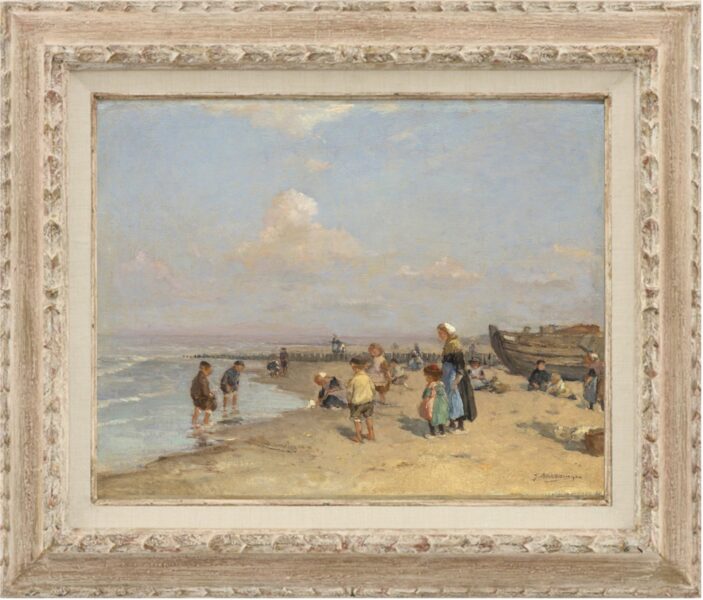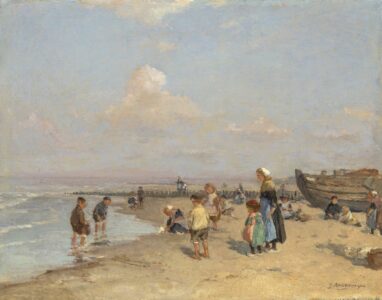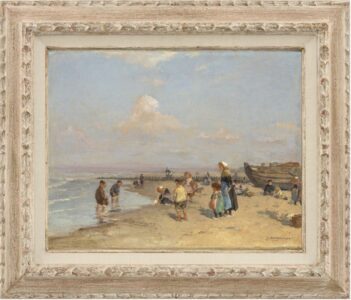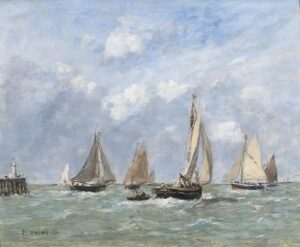Description
This painting by Johannes Evert Hendrik Akkeringa is a captivating portrayal of a tranquil day by the seaside, emphasizing the leisurely and communal aspects of life in a coastal village. This work exemplifies Akkeringa’s talent for capturing the serene and innocent moments of daily life, a hallmark of his artistic career.
In this scene, a group of children are depicted enjoying the beach. The fishing boat, grounded on the shore, serves as a prominent element in the The focus remains on the people—particularly the children, who are seen playing near the water, digging in the sand, and engaging in various seaside activities.
The sky is a vast expanse of soft blue, dotted with light, fluffy clouds that diffuse the sunlight, creating a gentle and soothing atmosphere. Akkeringa’s masterful use of light and color is evident in how he renders the subtle shifts in the sand’s tone and the shimmering surface of the water, which reflects the sky’s soft hues.
Akkeringa’s brushwork is delicate and expressive, capturing the fleeting moments of light and movement that give the painting its lively yet peaceful character.
Johannes Evert Hendrik Akkeringa (1861–1942) was a prominent Dutch painter, renowned for his contributions to the Hague School, a movement known for its realistic depictions of landscapes and daily life, often characterized by subdued colors and attention to atmosphere.
Born in Blinjoe, Sumatra, in the Dutch East Indies (now Indonesia), Akkeringa moved to the Netherlands at a young age, where he would go on to become associated with the Hague School. In the spring of 1878, Akkeringa enrolled at the Royal Academy of Arts in The Hague at the age of seventeen. At the Academy he befriended his fellow student Willem de Zwart (1862-1931) and over the years he studied with several other artists, including Floris Verster (1861-1927) and Marius Bauer (1867-1932). It is very likely that Akkeringa met Isaac Israëls (1865-1934) in the same period, with whom he became close friends.
He painted charming and serene depictions of domestic life and outdoor scenes, particularly those featuring women and children. Nature was his main source of inspiration. Favorite subjects were beaches with children playing, the dunes, tea gardens but also flower still lifes.
D I D Y O U K N O W ?
That Akkeringa is called “The painter of the carefree life” due to his ability to capture the serene and idyllic aspects of everyday life. It invites the viewer to appreciate the quiet beauty of ordinary moments.











Reviews
There are no reviews yet.